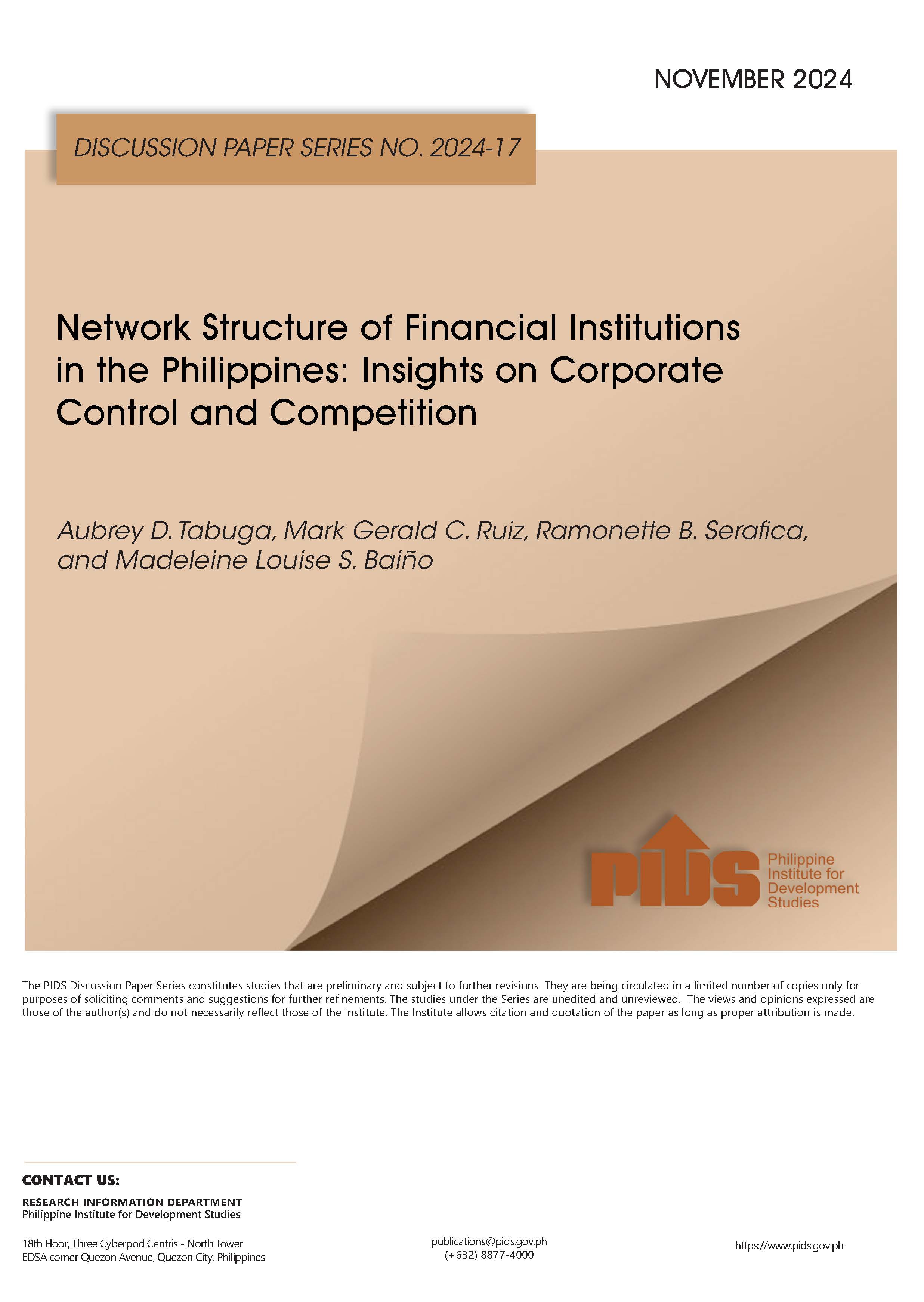Philippine economic losses due to the coronavirus disease 2019 (COVID-19) could reach as much as P2.5 trillion if the deadly illness is not contained, a study by the Philippine Institute for Development Studies (PIDS) showed.
Conducted by PIDS fellows, the study showed that the Philippine economy may lose between P276.3 billion at a best-case scenario, and P2.482 trillion at a worst-case scenario from the COVID-19.
The PIDS is a nonstock, nonprofit government corporation that serves as the government's primary socioeconomic policy think tank.
Under the study, the P2.5-trillion losses could be realized if the pandemic is not contained around the world, and the global economy slows down into a recession.
"The COVID-19 outbreak is expected to affect not only local health systems, but also local economies. Arguably, the most direct impact could be observed on the ability of workers to participate in the labor market," it read.
The figure takes into consideration a 5.3% reduction in household consumption as a result of a 19.7% drop in annual average labor supply, and 20% net reduction in average incomes among displaced workers.
Under such estimates, the most hard-hit sectors would be manufacturing (-P855.2 billion); trade (-P724.8 billion); transportation, storage, and communication (-P124.3 billion); and agriculture, forestry and fishing (-P110.3 billion).
"The estimates are only indicative; they are based on specific assumptions on perceived likely trajectory of the epidemic and consumption patterns," it read.
The same study indicated that in a best-case scenario -- if the pandemic is effectively contained around the world by the end of the second quarter -- economic losses would still amount to P276.3 billion.
"The results suggest that imposing community-wide quarantines alone may not be enough to sufficiently flatten the epidemic curve to avert substantial economic losses," said PIDS.
"It also suggests that extending community-wide quarantines may increase these economic losses given the same non-medical mitigation measure implemented," it added.
The government has since extended the enhanced community quarantine (ECQ) placed over Luzon until April 30, which started on March 17.
"Extending the Luzon-wide community quarantine by one month is projected to result in at least P150-billion worth in foregone economic activity based on our projection assumptions," said PIDS.
Moving forward, PIDS said the government should be able to isolate at least 70% of the symptomatic cases, even with the partial lifting of the ECQ, would be able to drastically reduce the number of infected cases on the peak day to 900,000 cases, predicted to occur in May or June 2021.
"To summarize, extending the ECQ without other mitigation measures merely delays the progression of the outbreak and still results in a large number of cases," it said.
"Aggressive efforts to implement early testing and, more importantly, earlier isolation of the majority of symptomatic cases to prevent them from infecting other susceptible individuals will be crucial to suppress the outbreak," the think tank added.
Conducted by PIDS fellows, the study showed that the Philippine economy may lose between P276.3 billion at a best-case scenario, and P2.482 trillion at a worst-case scenario from the COVID-19.
The PIDS is a nonstock, nonprofit government corporation that serves as the government's primary socioeconomic policy think tank.
Under the study, the P2.5-trillion losses could be realized if the pandemic is not contained around the world, and the global economy slows down into a recession.
"The COVID-19 outbreak is expected to affect not only local health systems, but also local economies. Arguably, the most direct impact could be observed on the ability of workers to participate in the labor market," it read.
The figure takes into consideration a 5.3% reduction in household consumption as a result of a 19.7% drop in annual average labor supply, and 20% net reduction in average incomes among displaced workers.
Under such estimates, the most hard-hit sectors would be manufacturing (-P855.2 billion); trade (-P724.8 billion); transportation, storage, and communication (-P124.3 billion); and agriculture, forestry and fishing (-P110.3 billion).
"The estimates are only indicative; they are based on specific assumptions on perceived likely trajectory of the epidemic and consumption patterns," it read.
The same study indicated that in a best-case scenario -- if the pandemic is effectively contained around the world by the end of the second quarter -- economic losses would still amount to P276.3 billion.
"The results suggest that imposing community-wide quarantines alone may not be enough to sufficiently flatten the epidemic curve to avert substantial economic losses," said PIDS.
"It also suggests that extending community-wide quarantines may increase these economic losses given the same non-medical mitigation measure implemented," it added.
The government has since extended the enhanced community quarantine (ECQ) placed over Luzon until April 30, which started on March 17.
"Extending the Luzon-wide community quarantine by one month is projected to result in at least P150-billion worth in foregone economic activity based on our projection assumptions," said PIDS.
Moving forward, PIDS said the government should be able to isolate at least 70% of the symptomatic cases, even with the partial lifting of the ECQ, would be able to drastically reduce the number of infected cases on the peak day to 900,000 cases, predicted to occur in May or June 2021.
"To summarize, extending the ECQ without other mitigation measures merely delays the progression of the outbreak and still results in a large number of cases," it said.
"Aggressive efforts to implement early testing and, more importantly, earlier isolation of the majority of symptomatic cases to prevent them from infecting other susceptible individuals will be crucial to suppress the outbreak," the think tank added.











